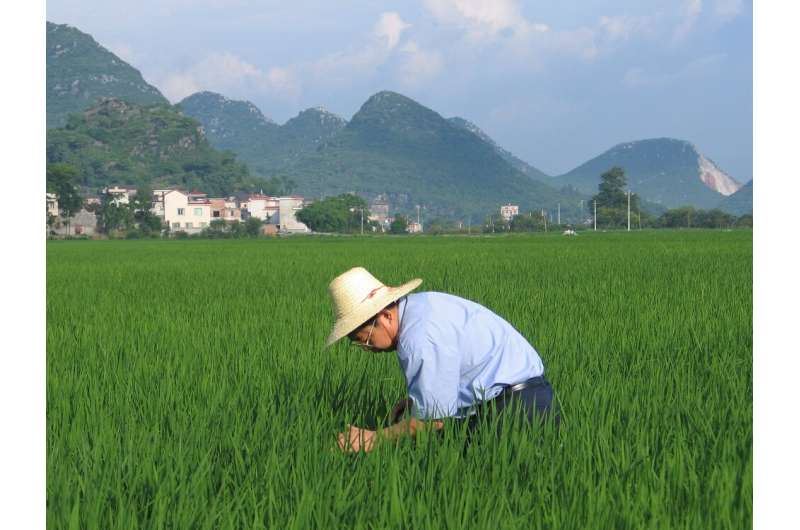This article has been reviewed according to Science X's editorial process and policies. Editors have highlighted the following attributes while ensuring the content's credibility:
fact-checked
proofread
Gene editing technique highlighted as possible 'savior' for climate change threatened rice crops

A review of gene editing techniques suggests that the CRISPR/Cas (clustered regularly interspaced short palindromic repeats/Cas) method could be a possible "savior" for rice crops threatened by climate change and high food demand.
The study, published in CABI Reviews, highlights that while rice is one of the most consumed cereals worldwide and feeds about three billion people, climate-induced abiotic and biotic stresses have affected the production and quality of rice crops.
Dr. Antonio Costa de Oliveira, lead author of the Federal University of Pelotas, Brazil, and a team of fellow scientists found that the CRISPR/Cas tool was efficient in gene editing in studies related to yield, tolerance to biotic and abiotic stresses and rice grain quality.
However, the review, which sought to describe the different gene editing techniques and their respective applications in rice breeding, argues that the impact of the CRISPR/Cas approach in breeding programs depends upon the cultivation of the edited plants on a large scale in the field.
Dr. Costa de Oliveira said, "The development of new, higher yielding cultivars is necessary to ensure global food security.
"Although great progress has already been achieved by conventional breeding, biotechnological tools, such as transgenics and genome editing, can aid in meeting future demands.
"Gene editing is characterized by cutting and modifying target genes. Among the genome editing techniques, CRISPR/Cas has been proposed because of its ease of manipulation.
"Variants such as multiple Cas proteins, base editing and prime editing, which aim to increase editing efficiency have also been proposed. Edited plants are also more accepted because they are transgene free."
The study outlines that a 50% increase in the current consumption of rice is projected for 2050—which would mean a demand as high as 1.125 billion metric tons.
But the occurrence of biotic stresses (diseases—viruses, bacteria, fungi, nematodes, pests and weeds) coupled with abiotic stresses (drought, submergence, salinity, heat, cold and heavy metals) is a limiting factor for rice production.
Climate change also influences the frequency, intensity and duration of these stresses, the scientists say. Therefore, it is necessary to develop new rice cultivars with tolerance to stress and higher yield potential, since the expansion of the cultivated area is limited.
Dr. Costa de Oliveira added, "The high potential of CRISPR/Cas9 editing, for instance, has aided in the development of broad-spectrum resistance against bacteria, fungi and viruses by silencing susceptibility genes and the insertion of resistance genes.
"In this sense, CRISPR/Cas9-mediated genome editing has made it possible to introduce mutations in three promoters of the SWEET gene that resulted in rice lines with broad-spectrum resistance to Xanthomonas oryzae pv. Oryzae."
The researchers conclude by stating that although conventional breeding has been decisive so far, there is still a long way to go in order to meet future demands and face the challenges of rice cultivation.
"Plants improved from genome editing and conventional breeding are similar in terms of risks to the environment and human health, which are practically non-existent," Dr. Costa de Oliveira said. "Therefore, it is expected that edited plants, in addition to meeting the demands, have good acceptance among consumers."
More information: Valeria Oliveira Nizolli et al, Genome editing in rice: New paths for an old crop, CABI Reviews (2023). DOI: 10.1079/cabireviews.2023.0008
Provided by CABI





















